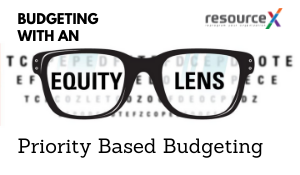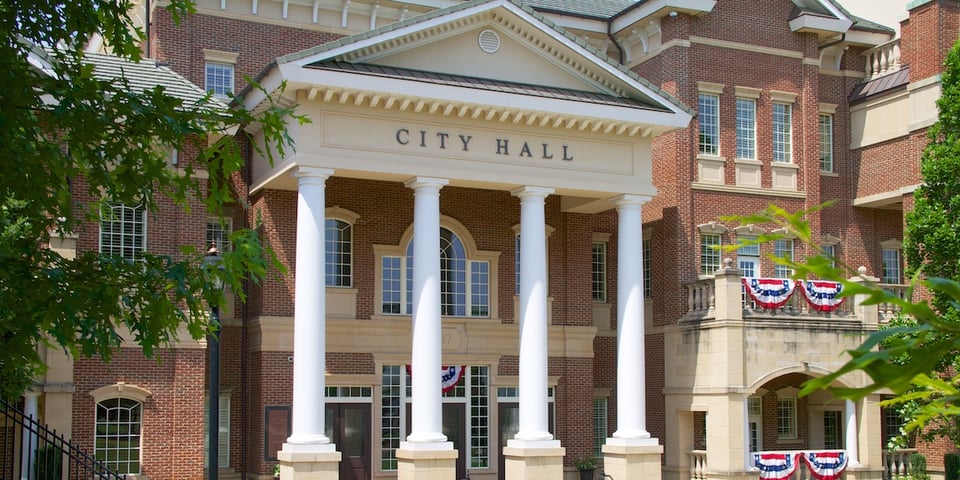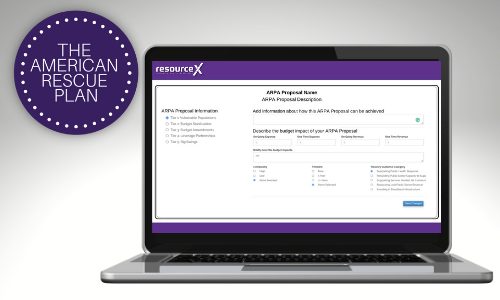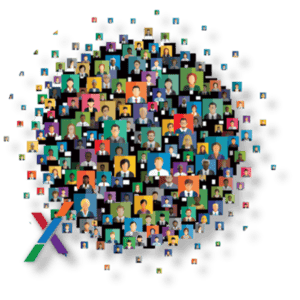 I recently read a quote from Mike Mucha, Director of Research at GFOA, in the October issue of Governing where he stated, "The budget is, basically, the center of the government universe. It's where decisions about what's important get funded."
I recently read a quote from Mike Mucha, Director of Research at GFOA, in the October issue of Governing where he stated, "The budget is, basically, the center of the government universe. It's where decisions about what's important get funded."
This message completely rings true for me and is why we have focused on the budget itself as the most important process so well-positioned for transformation if we wish to transform the lives of the people in our communities.
A community gives its resources to a local government, and in turn, entrusts that local government organization to invest those resources equitably towards a more prosperous future for all.
However, the budget process that so many of our communities depend upon to deliver on such a promise of prosperity just seems to come up short. The line-item budget turned 100-years old this year, and it’s feeling its age. For as much as the line-item budget is something to marvel at for its sustained use by so many, and for as much as it truly serves a great purpose for spending control and appropriation management; as a resource alignment mechanism to deliver equitable prosperity for all, it’s ill-equipped for the task.
Now, it’s easy to critique the line-item budget process. I’m not the first and likely won’t be the last. From zero-based budgeting to budgeting for outcomes to performance-based budgeting, budget reform is not a new topic. It’s just that we still long for a clear and attainable breakthrough, one that would be easy on our staff to implement, powerful in the way it equips decision-makers, and meaningful to our residents whose lives depend on it.
The simplest breakthrough we’ve seen? Especially as it pertains to delivering on the fulfillment of budgeting for equitable prosperity:
1. Transitioning from a line-item driven budget to a program budget, and
2. budgeting programmatically within the context of priorities, from equity to climate, safety to infrastructure, health to arts and culture.
In short, creating a clear path from resources to results.
One of the leaders in the budgeting for equity movement has been the City and County of Denver, Colorado. Among the earliest initiatives of Mayor Michael Hancock when he first took office was establishing an Office of Social Equity and Innovation and creating a clear definition of equity. However, they struggled to find a connection to their stated objectives within their line-item budget. By creating a program budget and identifying program-centric change recommendations in the budget process, they were astounded to see that the opportunity to increase equity existed within every service they provided. We wrote about their experiences to Budget for Equity in the Government Finance Research Center blog last year.
Most recently, ResourceX partnered with Results for America and GFOA to work with a cohort of cities on the What Works Cities City Budgeting for Equity and Recovery (CBER) program. Through this program, select cities endeavored to define equity for their community and align resources accordingly through Priority Based Budgeting.
Some inspiring stories from the CBER cohort include the City of Austin's work to define what equity means to their community and the City of Pueblo's application of equity to their American Rescue Plan Act fund process and a citywide rollout through program budgeting and Insights.
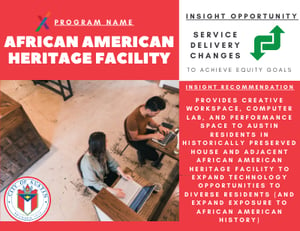 City of Austin
City of Austin
The City of Austin worked with ResourceX to identify a custom set of attributes against which each of their 55 programs within the Arts & Culture Division could be evaluated to determine equity alignment. Their program evaluation process focused on enhancing equity and expanding revenue-generating opportunities. Through a ResourceX facilitated insight workshop, Austin identified 65 opportunities, with 17 directly tied to achieving equity goals.
-1.png?width=300&name=ARPA%20Event%20(7)-1.png) City of Pueblo
City of Pueblo
The City of Pueblo applied the PBB scoring methodology to assess their ARPA proposals by creating a unique scoring matrix to evaluate all proposals against. Per Treasury guidance, and as a strong focus from the city in general, they made equity a primary focus in their evaluation process.
In addition to their ARPA strategy, Pueblo built out an entire program inventory, allocated their line items, associated Basic Program Attributes (mandate, reliance, cost recovery, population served, demand and equity), and participated in a facilitated ResourceX insight workshop utilizing a new equity definition for their community, two new equity scoring categories and unique equity scoring metrics.
Although the equity goals of various organizations are different, they all share a vision for change, which is a direction that will lead to more significant systemic changes. Suppose local government is a collection of programs offered to meet its stated policies. In that case, programmatic changes can be the vehicle for systemic change, which sums up my vision for how ResourceX can play a part in making our world a better place to live.
Local government success can only be defined as the ability to provide services and programs fairly and equitably to all citizens. I believe that local governments can enter a new era in citizen-focused governance by focusing on equity. This includes setting clear equity goals and objectives, understanding individual program impact on equity outcomes, adapting existing programs, starting new programs, and securing funding within the budget for equity-focused programs.
As stated in the ResourceX Mission and Vision Statement, "Things are far from perfect. So why try? We believe our work at ResourceX begins with the premise that maybe we have enough resources within our organizations, throughout our communities, or across our regions to provide a good quality of life for everybody; the task of our work is to help our clients systematically go out and try to prove it."
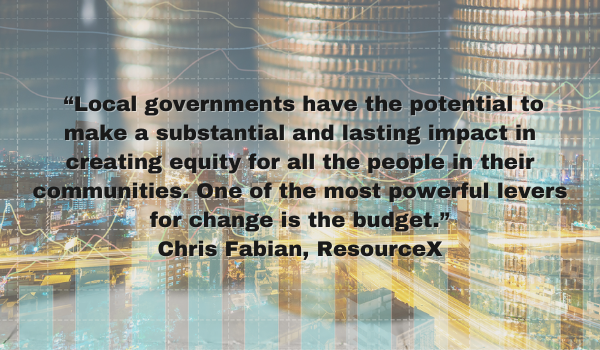

.png?width=1200&name=Solution%20(1).png)

